Naturalist and explorer John Muir wrote in 1891: “In the vast Sierra wilderness far to the southward of the famous Yosemite Valley, there is a yet grander valley of the same kind.” He was writing about the area now known as Sequoia National Park, one of the most important national parks in the entire Sierra Nevada mountain range in California.
As you probably figured out, the main attraction of this high-altitude park are the sequoias, gigantic trees that, as we will see, put this national park in the Guinness Book of World Records. But feeling small in front of these giants is not the only instance you will be filled with awe. In one or more days you can reach fantastic viewpoints, walk along trails that wrap around or cut through vast meadows surrounded by granite peaks, rivers, waterfalls, enchanting mountain lakes and deep caves.
For all these reasons, Sequoia National Park (a gem in a California trip) is one of the most spectacular yet least visited treasures in the Golden State. When speaking of the most important natural attractions, we cannot forget the General Sherman Tree, the largest tree on the planet, the outstanding Moro Trail, Mount Whitney, the tallest mountain in the United States (excluding Alaska) and, not far from Sequoia, the deepest canyon in the country.
Contents
- Is It Worth It To Get the America the Beautiful Pass?
- How Many Sequoia Parks Are There?
- How To Get To Sequoia National Park
- Best Time to Visit Sequoia National Park
- Thing to do in Sequoia in 1 Day: itinerary
- Things to see at Sequoia over Multiple Days
- Tips for Visiting Sequoia National Park
- Where To Stay in Sequoia National Park
Is It Worth It To Get the America the Beautiful Pass?
Yes, since it’s a national park, admission to this park is clearly included in the America the Beautiful Pass. However, if you don’t plan on getting one, know that with a single admission (price as of February 21, 2019: $35) you can visit both Sequoia National Park and the adjacent Kings Canyon (the very deep canyon just mentioned) another national park, and due to their proximity, they are often considered as one area. In addition to Kings Canyon, you can also visit the Hume Lake District/Sequoia National Forest and the Giant Sequoia National Monument with the same ticket.
How Many Sequoia Parks Are There?
What a mess! What does all this mean? How many “Sequoia Parks” are there? To be clear, in this article, I will be talking about the actual Sequoia National Park (the one that everybody or almost everybody visits).
The Sequoia National Forest is a much larger and more rugged nature reserve that borders Sequoia/Kings Canyon to the north and south. It is managed by the federal government and the conservation project has different goals than the National Park management does. The area is full of sequoias and, although there are restrictions, it is still open to visitors and it is possible to go camping there. The clearly less services and hiking on the various trails in the forest could be more complicated, so I would certainly not recommended it to those who are new to the area. I firmly advise them to “settle” for the more touristy (but also more accessible and rewarding) National Park. For more information, visit the official website.
- The Giant Sequoia National Monument is a protected area within the National Forest itself, divided into 2 districts: Hume Lake District (north of Sequoia National Park, near Dunlap) and Western Divide Ranger District (south, near Springville). The area is managed by the U.S. Department of Agriculture, which protects the natural heritage of over 33 sequoia forests. Even in this case, however, the advice given above applies. Unless you have ample time or specific reason, Sequoia National Park is always the best choice. Here is the official website.
How To Get To Sequoia National Park
The park has two entrances that are about 50 miles apart, namely the Ash Mountain Entrance and the Big Stump Entrance. Pay close attention to the distinctions between the entrances, because entering through one entrance is completely different from entering through the other.
From Los Angeles: Ash Mountain Entrance
Ash Mountain Entrance is the most commonly accessed route to the park by visitors coming from the south (Los Angeles, San Diego) or southeast (Las Vegas or Death Valley), especially by those who do not intend to pass through the adjacent Kings Canyon (where, however, there is a fantastic scenic route, as you will read later). To reach Ash Mountain coming from the north or south you have to get off of Highway 99 towards Visalia, pass Three Rivers and continue on Highway 198, a beautiful mountain road that takes you to Sequoia in about 50 minutes (from Visalia). For more ideas on this itinerary read our article: From Los Angeles to Sequoia National Park.
From San Francisco: Big Stump Entrance
I would like to point out that it is also possible to enter the park by passing through Kings Canyon: this solution is usually chosen by people coming from the north (Yosemite, San Francisco) and, having a little more time available, they also choose to visit Kings Canyon (definitely less crowded). To reach the Big Stump Entrance you need to get to Fresno and take Highway-180 E.
From there, after a possible visit of the Kings Canyon, you must get on Highway 198, called Generals Highway, which leads directly to the Sequoia (Use the Lodgepole Visitor Center as a reference point). It is an incredibly scenic road that winds through the sequoia forest, and some sequoias are right on the edge of the road. It is generally accessible, but in the event of a heavy snowfall it could be closed, thus eliminating the option to travel between the two parks from the inside.
Therefore during the low season you should monitor the official website (The “Alerts” section on the home-page is constantly updated) to see if the Generals Highway is open. Otherwise you will be forced to settle for the Kings Canyon or take the long route to reach the Sequoia from the south, entering through the Ash Mountain Entrance. Or even worse, you give up altogether.
Best Time to Visit Sequoia National Park
Sequoia National Park is open throughout the year, and tends to be less crowded than its “competitor” Yosemite, which, in addition to its many other natural beauties, features sequoias, also found in Mariposa Grove. In spring and summer you can see brightly-colored wild flowers and gushing waterfalls (but not in late summer). During the winter, on the other hand, you can see giant sequoias covered in snow. However, bear in mind that this is a park is at a high elevation, so you must bring everything you need, including the appropriate clothing to the obligatory snow chains on board.
During the winter and spring, you may find more visitors, because Tioga Road, Yosemite’s scenic road, is closed until late spring and this prevents people from crossing the Sierra Nevada from Yosemite heading east towards Death Valley – Las Vegas, forcing travelers to access the parks from the south (via Highway-99 S and I-15 N, a considerably longer route) and often, alas, to decide against visiting Yosemite.
Since the Sequoia is practically on the road, it is an excellent stop to break up the long journey and to “make up” for the “missed opportunity” to visit Yosemite. However, as previously mentioned, it is always good to be careful, because in the winter roads may be closed due to inclement weather in both in Sequoia National Park and Kings Canyon. The Cedar Grove and Mineral King sections are inaccessible during the winter season. Only Generals Highway is open for the whole year, but it could also be closed during sudden storms or emergencies for safety reasons.
Thing to do in Sequoia in 1 Day: itinerary
The average duration of time tourists spend in Sequoia National Park as they travel through California and its parks is usually one day, sometimes half a day or a few hours. Fortunately, in part because the park is small, the things to see are limited; moreover they are concentrated in the same area and easily reachable, even though of course there are also opportunities to go on hikes that take a lot more time, energy and… there are other views to see. But that can be decided later on. My advice is to focus on the area around the Lodgepole Visitor Center, accessible from the Ash Mountain Entrance, not far from here is the so-called Giant Forest, the famous sequoia forest that conceals the General Sherman Tree.
Recommended Trails
Let’s suppose you only have one day (about 4-5 hours). Since the giant sequoia trees are the most unique feature of the area, you will undoubtedly want to see the General Sherman Tree. For this reason I advise you to prioritize visiting the sequoia forest and to dedicate the remaining time to the other areas of the park before continuing on to the next stop or reaching Kings Canyon via the Generals Highway.
1) Get in your car and drive to the king of all the sequoias, the General Sherman Tree. Just 2.5 miles after the Giant Forest Museum you’ll turn onto Wolverton Road, a short road that leads to the parking area (its’ easy, just follow the signs, you’ll have to turn right at the first stop). From here begins the easy paved trail that leads to this 2,700 year old giant that is taller than the Statue of Liberty in New York City.
In case you need it, I’ll also mention that the Orange Route, one of the free shuttles in Sequoia National Park (comes every 15 minutes from 9am to 6pm), takes you from the General Sherman parking lot to the nearest stop to the General Sherman Tree on the other side of the woods. The shuttle service can also be useful for those who, having completed the trail (which is not a loop), want to quickly return to their car without having to go back the same way again.
But there’s more. The Congress Trail, which branches off of the main trail that takes you to General Sherman, is a sort of open-air museum where you can wander among the other majestic trees of the Giant Forest. It’s a simple loop trail lasting about 3 miles, and it takes about 1 hour to do it all.
2) After the Giant Forest, an area of the park that is definitely worth visiting is the Moro Rock/Crescent Meadows Trail, another trail that splits off from the Generals Highway near the aforementioned museum. The attractions of this section of the park don’t require much time to be visited, but I suggest you make a choice and avoid venturing on long hikes (especially Crescent Meadows) if sequoias are the priority.
Here’s what you can see along the Moro Rock/Crescent Meadows Trail:
- Moro Rock: An impressive, panoramic granite monolith whose summit can be reached by climbing a stone staircase, that is 295 ft long. As you go up, looking west you can enjoy beautiful views of the San Joaquin Valley; if you are worried about the condition of the trail, I would say that it is safe, but I would say to those who afraid of height or are taking children with them. The view from the top of Moro Rock is indescribably beautiful! The hike starts at the parking lot, where the shuttle stop is also located, 1.6 miles from the museum.
- Tunnel Log: One of the most famous photographed spots in the park. This ancient sequoia has fallen and the rangers had the clever idea to make it a tunnel that you drive through. It is located on the road 1.5 miles from the museum. If you like the idea of driving through a sequoia, then you shouldn’t miss out on this opportunity. For now it’s the only place within a mile radius that allows you to do so, since it is no longer possible to drive through the better known Wawona Tree in Mariposa Grove in Yosemite. If you rented a tall car, don’t worry: the tunnel is 17 ft tall and 7.9 ft wide.
- Crescent Meadows: It is a green clearing that John Muir called the “Gem of the Sierra”. You can take a stroll only on the walkways created by the sequoias tree trunks and see the incredible forest of giants that surrounds this quintessential meadow of the sierra, where often and willingly you can also see the bears (stay at a safe distance, I recommend you) and other specimens of the local fauna. From the parking area (with shuttle bus stop) depart the various paths, including the one leading to Tharp’s Log, a small house carved from the trunk of a sequoia (1.55 miles).
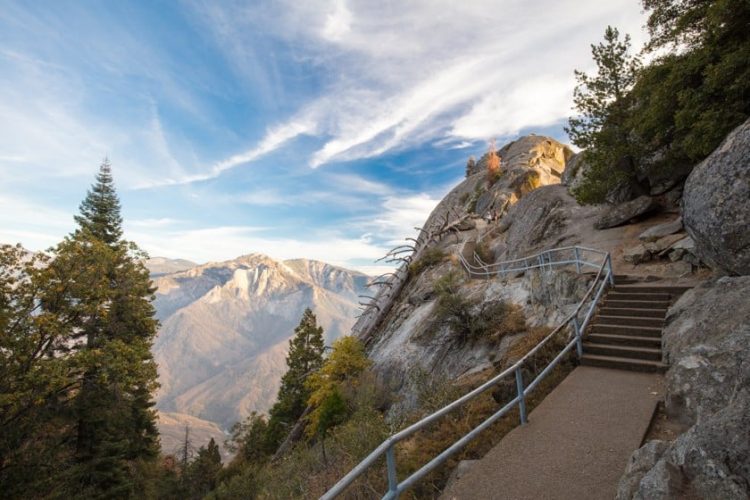
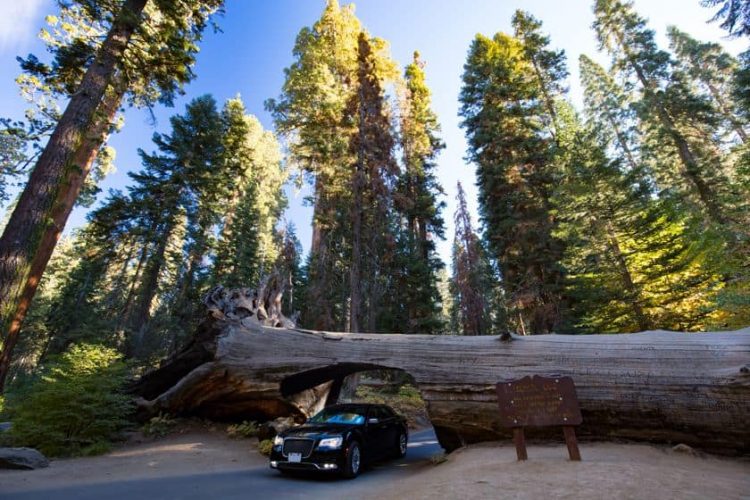
Things to see at Sequoia over Multiple Days
Many times people decide to dedicate 2 or more days to the park and perhaps to stay at Three Rivers or in one of the hotels within the park. In that case, there is no shortage of things to see.
Giant Forest Museum
After visiting the Senate and General Sherman in person and seeing their remarkable stature, you might decide to visit the Giant Forest Museum. A visit to this small museum can provide a general insight into the history of the park and the sequoias. It’s not hard to find; it is located on the main road, 15 miles from the Foothills Visitor Center, at the museum parking lot.
From here, in addition to the many beautiful trails, there are also two free shuttle routes, “gray route” and “green route“. The first leads to the loop of Moro Rock and Crescent Meadows, while the second leads to Lodgepole Campground. The shuttles are active from May to September and during this period the Moro Rock/Crescent Meadows Trail is closed to car traffic on weekends and holidays.
Big Trees Trail
Usually, if you take a walk in the shade of the sequoias on the Congress Trail, you decide to skip the Big Trees Trail, a short trail that is quite popular near the museum (on the north side), which is likened to an appetizer or a dessert after the walk on General Sherman’s most famous and popular trail. The Big Trees Trail is an agile asphalted loop that – surrounding a beautiful meadow in the Sierra called Round Meadow – allows you to walk among sequoias for about a mile. Factoring in a few small stops in front of the panels with information about the ecology of the sequoias, you can calculate about an hour for this hike.
Crystal Cave
This is something completely different. It is a cave with rare mining formations in the middle of the Sierra Nevada. To reach the Crystal Cave you need to drive from the Foothill Visitor Center for 13.6 miles, then turn onto Cave Road and follow it for another 45 minutes (in other words, this is not a walk). Be careful, though! Access is not free and there are various tours available (for families as well as experienced hikers), but they must be booked exclusively on the park’s official website. Tours last from 50 minutes to 6 hours and the cost of tours ranges from $ 16 to $ 135.
Tokopah Falls
Finally, one last recommendation. If you’ve heard of Sierra Nevada Falls and missed the Yosemite Falls (much more famous) and the other waterfalls in the “competing” park, don’t worry. Once you’ve seen the sequoias, you can reach Tokopah Falls, one of the best and tallest waterfalls in the park.
Travel northward towards the center of the park, after visiting the sequoia forest of the Congress Trail, you will need to go back to your car and head towards the Lodgepole Visitor Center. Behind the visitor center there is a campsite (Lodgepole Campground), which can be reached by crossing a small bridge over the Kaweah River (Marble Fork), immediately after the parking lot and there you will also have to leave your car. The entrance to the Tokopah Falls Trail is on the right as soon as you cross the small bridge. It is an quick hike that follows the course of the river among impressive granite peaks awaits you, with a small elevation that shouldn’t be a challenge even for less experienced hikers. The duration of the hike is about 1.30/2 hours, for a total of 3.7 miles.
The waterfalls are 1197 ft high and have the best waterflow in spring in the early summer. However, as the towards the end of the season, the waterflow decreases. Also during summer months, you can also use two free shuttle lines (Green Route from the museum and Purple Route from Dorst Campground to Kings Canyon).
Grant Grove and the Other Sequoias of Kings Canyon
If General Sherman is the most famous tree in the park, it’s also true that it’s not the only protagonist in the area. General Grant is located in the adjacent Kings Canyon, an hour away from General Sherman, on a very short path full of sequoias. There are also other things to see in the park, but to find out more I recommend to you our in-depth guide of Kings Canyon.
Tips for Visiting Sequoia National Park
- If you go in low season, don’t be mistaken. The entry to the Park is not free just because you haven’t found a ranger at the entrance kiosk. In winter, the cashier moves to Grant Village.
- You won’t find gas stations inside Sequoia National Park, but you can fill up at Hume Lake, Stony Creek and Kings Canyon Lodge.
- In Sequoia National Park there have been some issues with bears. To protect vehicles (even more importantly, your life!), follow the park rules very carefully. It may sound bizarre, but rangers use as a rule of thumb…the length of school buses to determine the safe distance to be kept with the animals. For example: at Sequoia National Park, you generally need to be 150 ft (4 school buses) away from bears and the most dangerous animals. When confronted with other animals, it is sufficient to count half of the school buses (75 ft).
- Pets are only allowed in campsites, picnic areas and other designated areas of national parks.
Where To Stay in Sequoia National Park
Sometimes indoor accommodations in national parks can be quite expensive, but in Sequoia National Park you can also find affordable solutions. There are also many accommodations nearby that will give you easy access to Sequoia. From Three Rivers to Visalia and Porterville, passing through Fresno and Bakersfield, are strategic locations to get to your next stop (Yosemite and Death Valley). We wrote article about it which you can read following the link below, where we give you our advice on how to find a hotel either inside or nearby Sequoia.
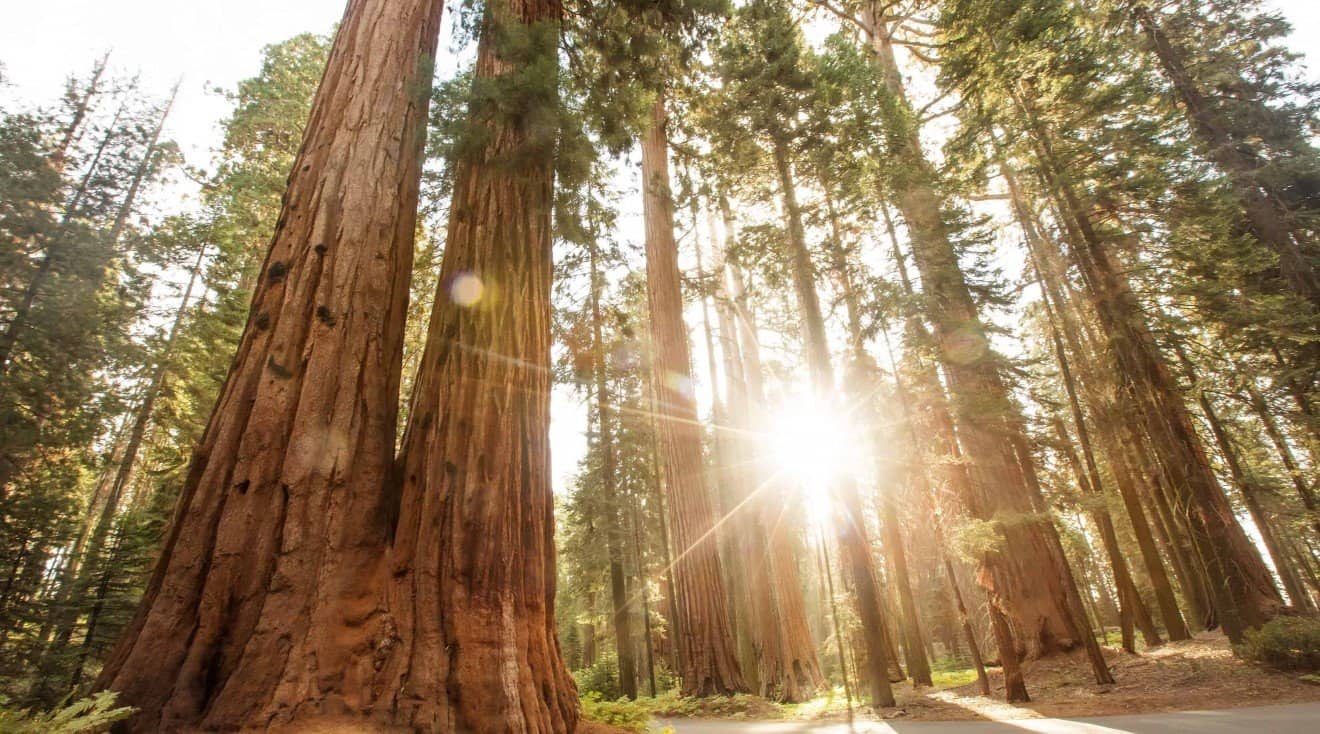
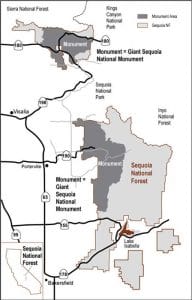
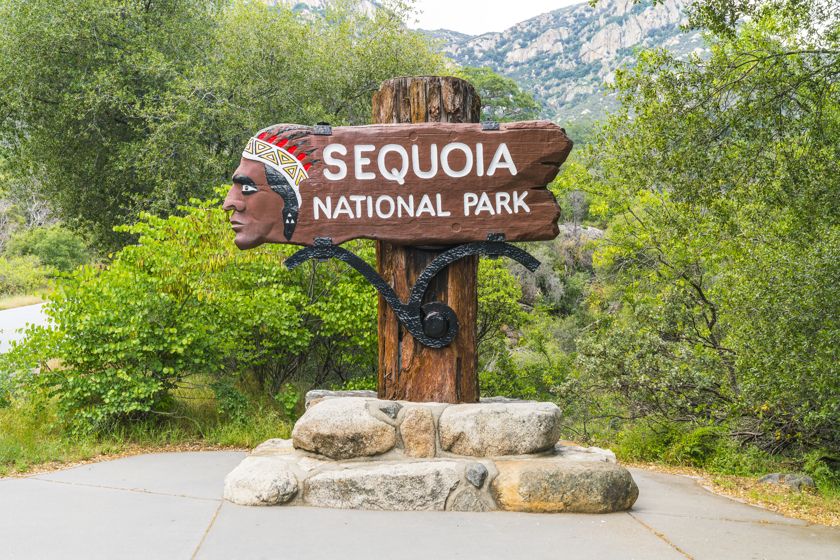
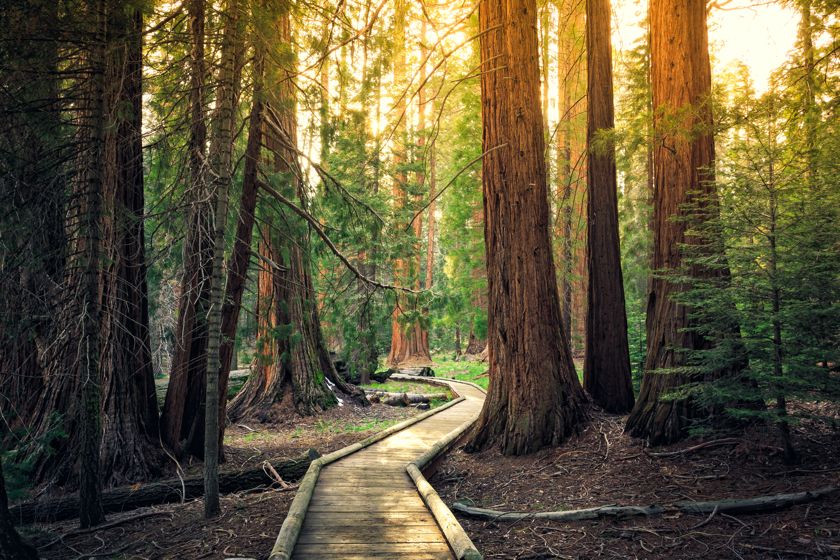

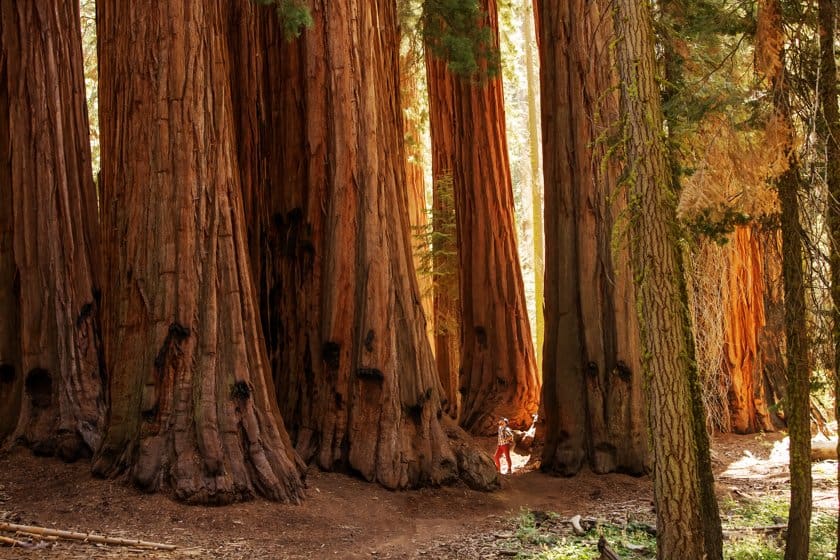
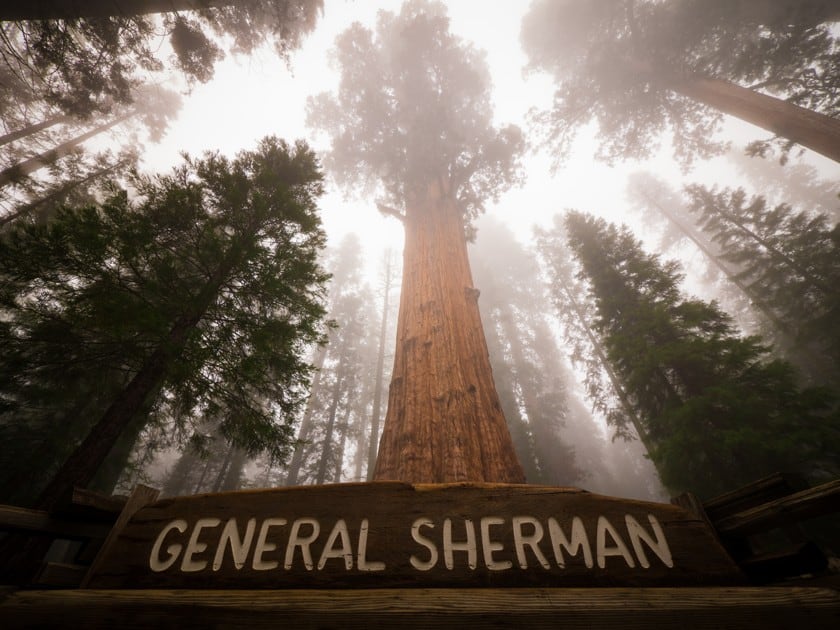
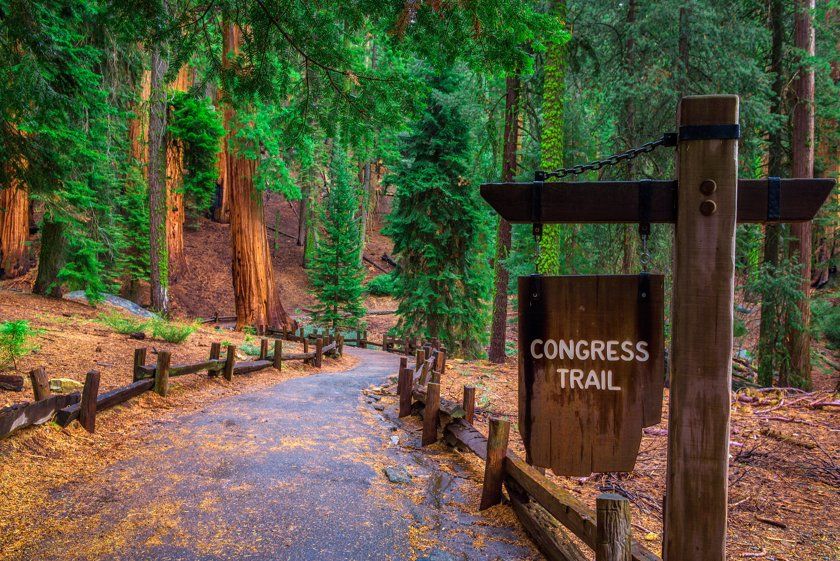
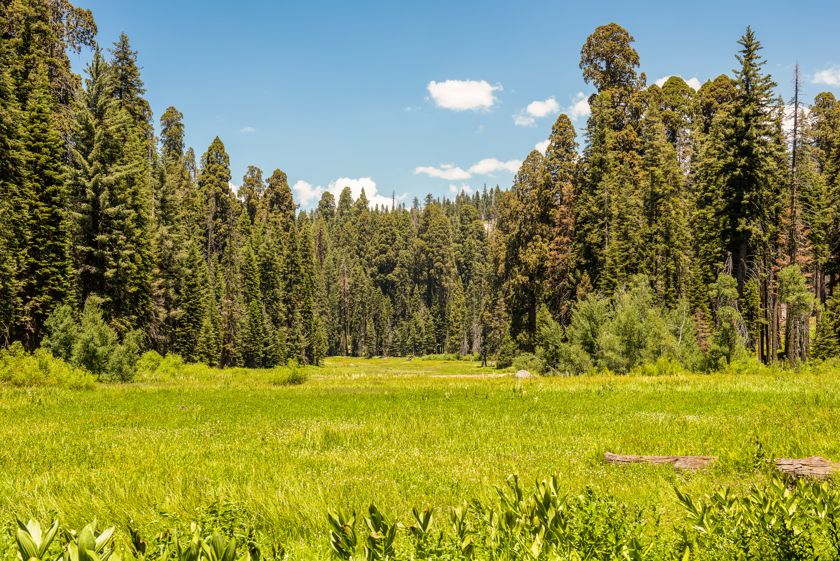

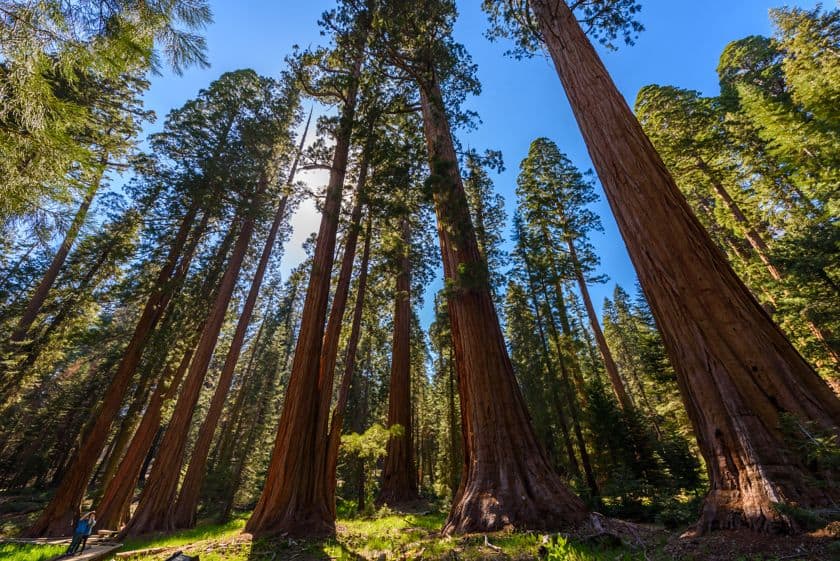
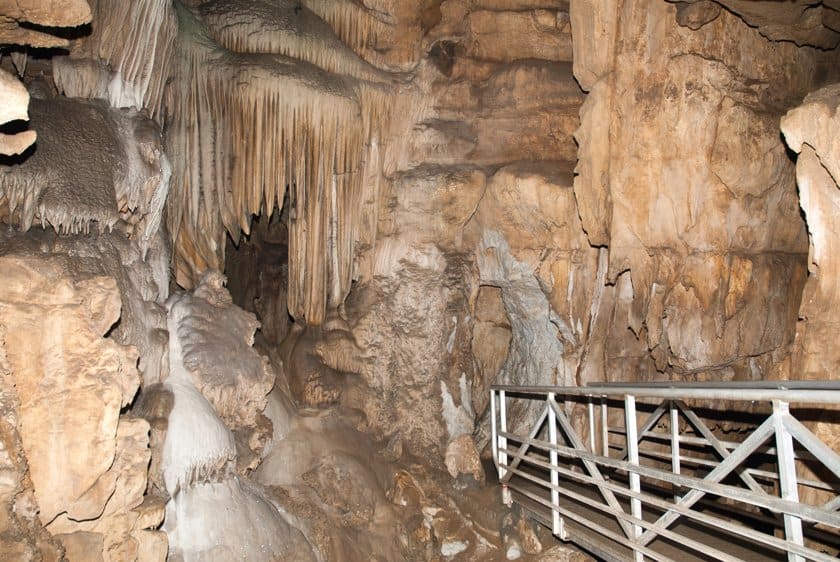
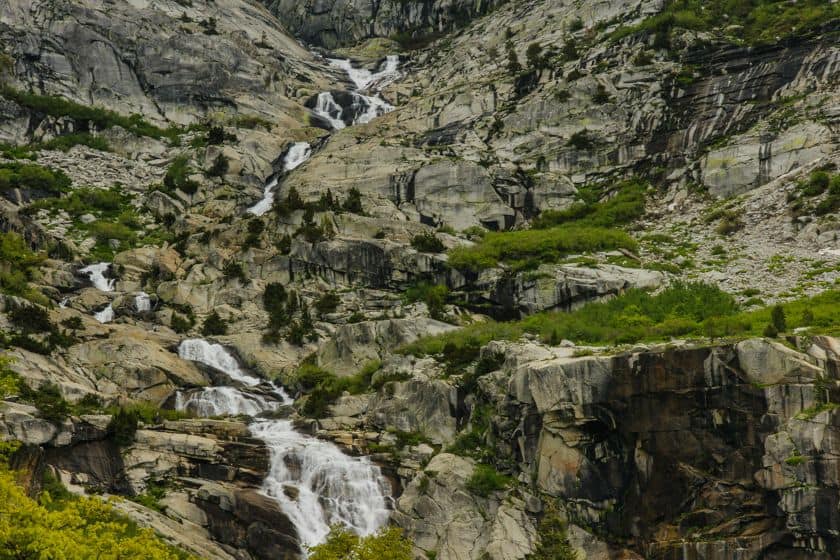
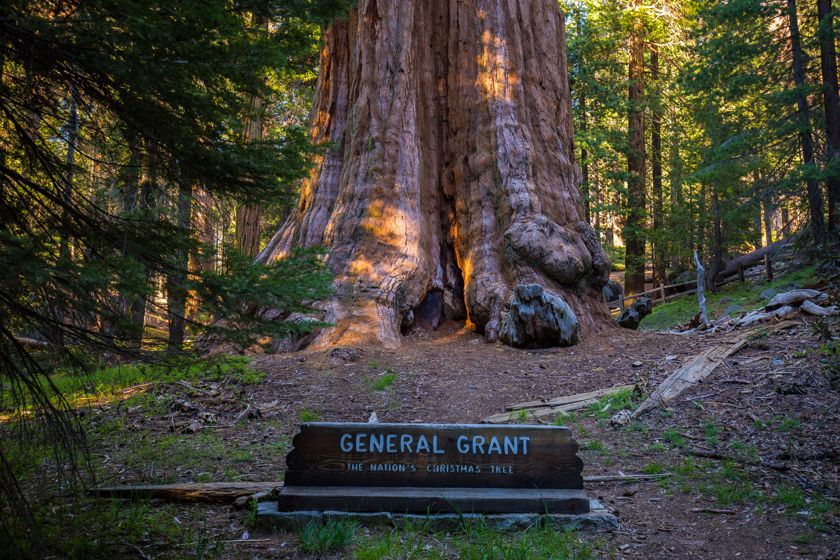
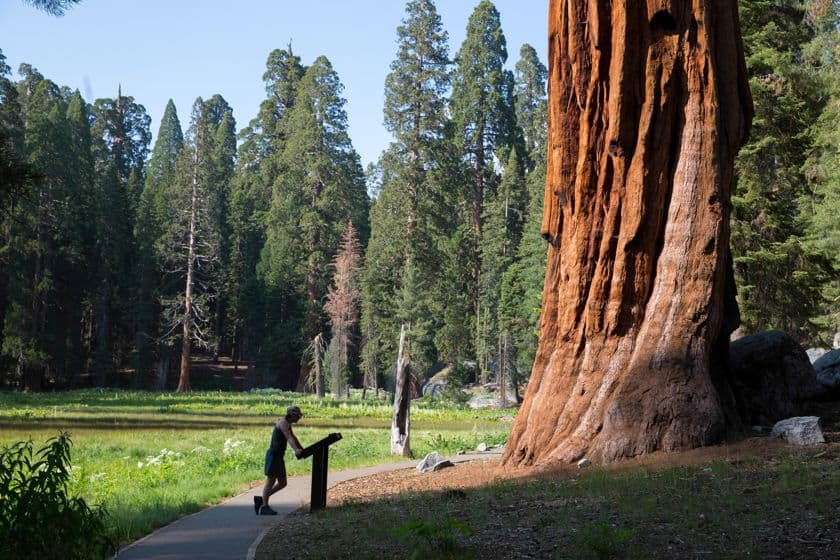
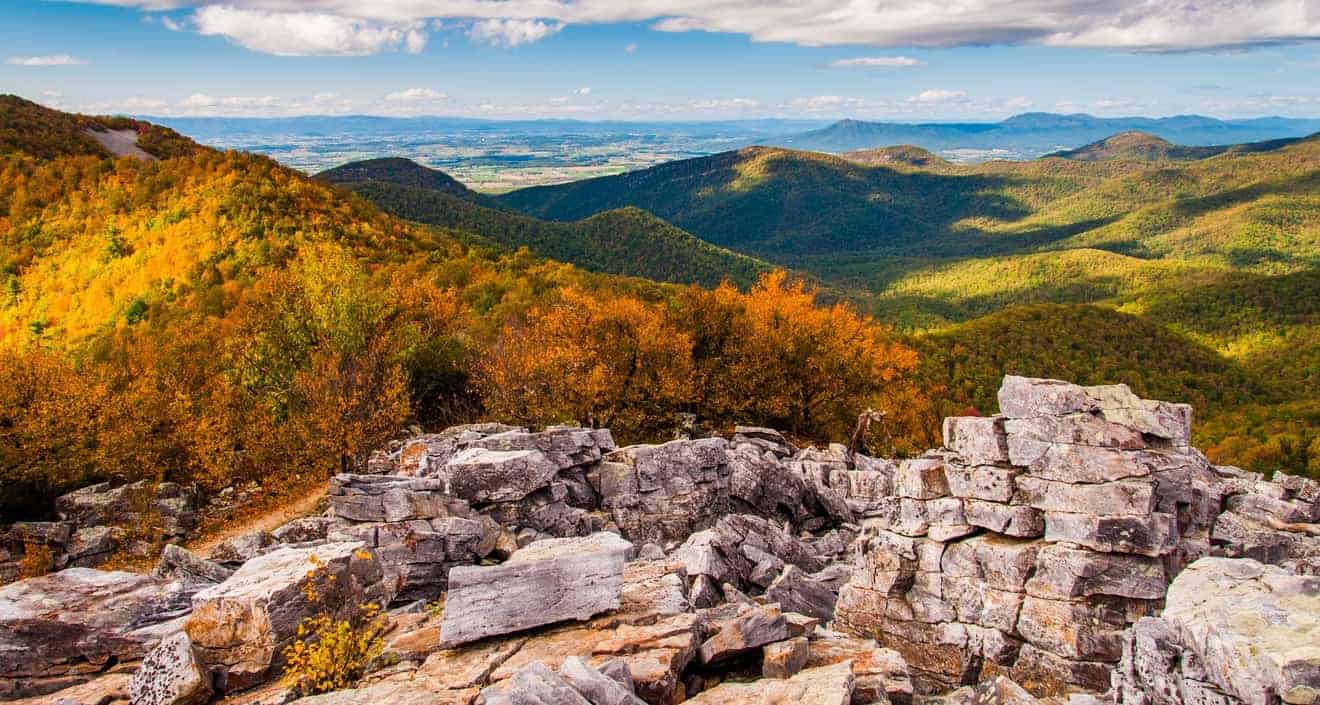

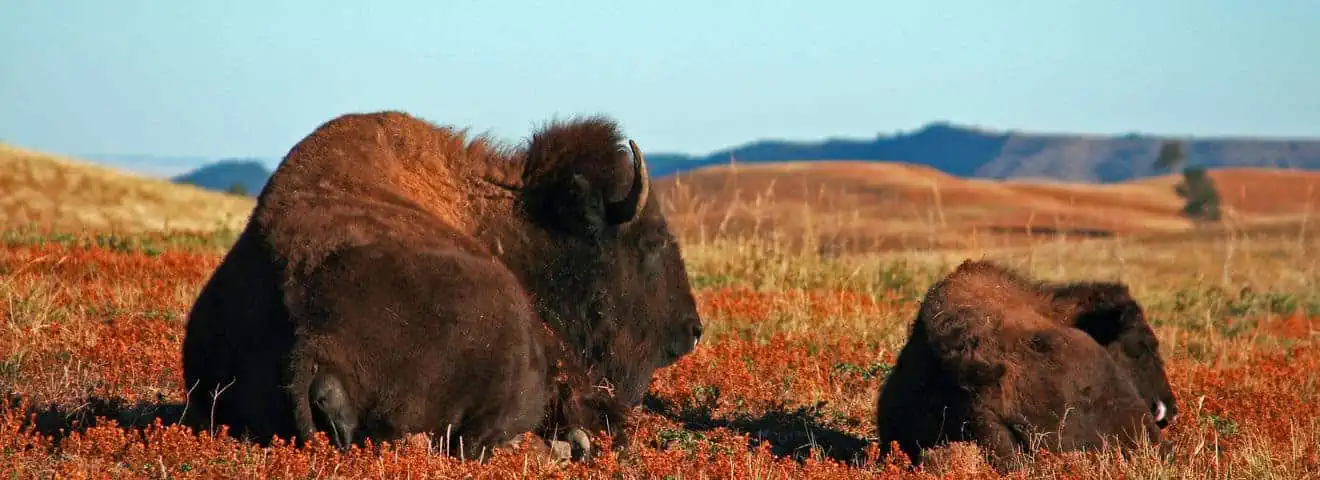
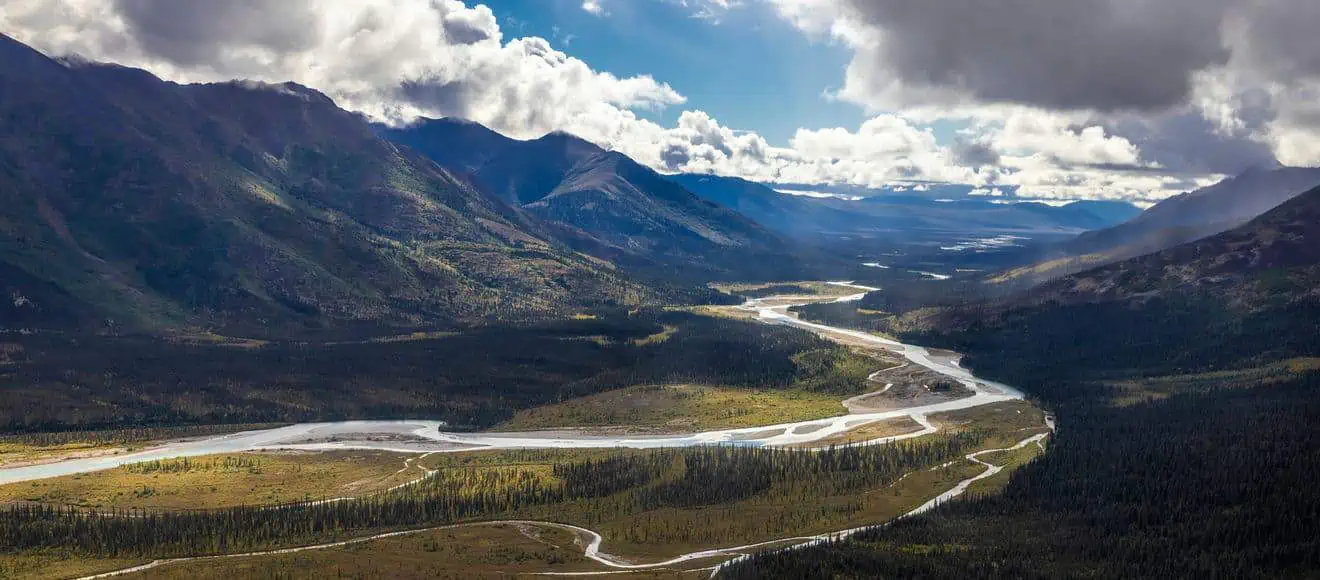
Your photos are beautiful. I love the golden tones and light in them. Do you have any photography advice for getting the best possible pictures? Would sunrise or sunset be best the best times? I have a Sony mirrorless with a couple of prime lenses although neither are super wide. Thanks!
Hi! Sorry but I’m not a professional photographer, however I suggest you go see the sunrise at Moro Rock and the sunset at Sunset Rock (and Moro Rock too!).